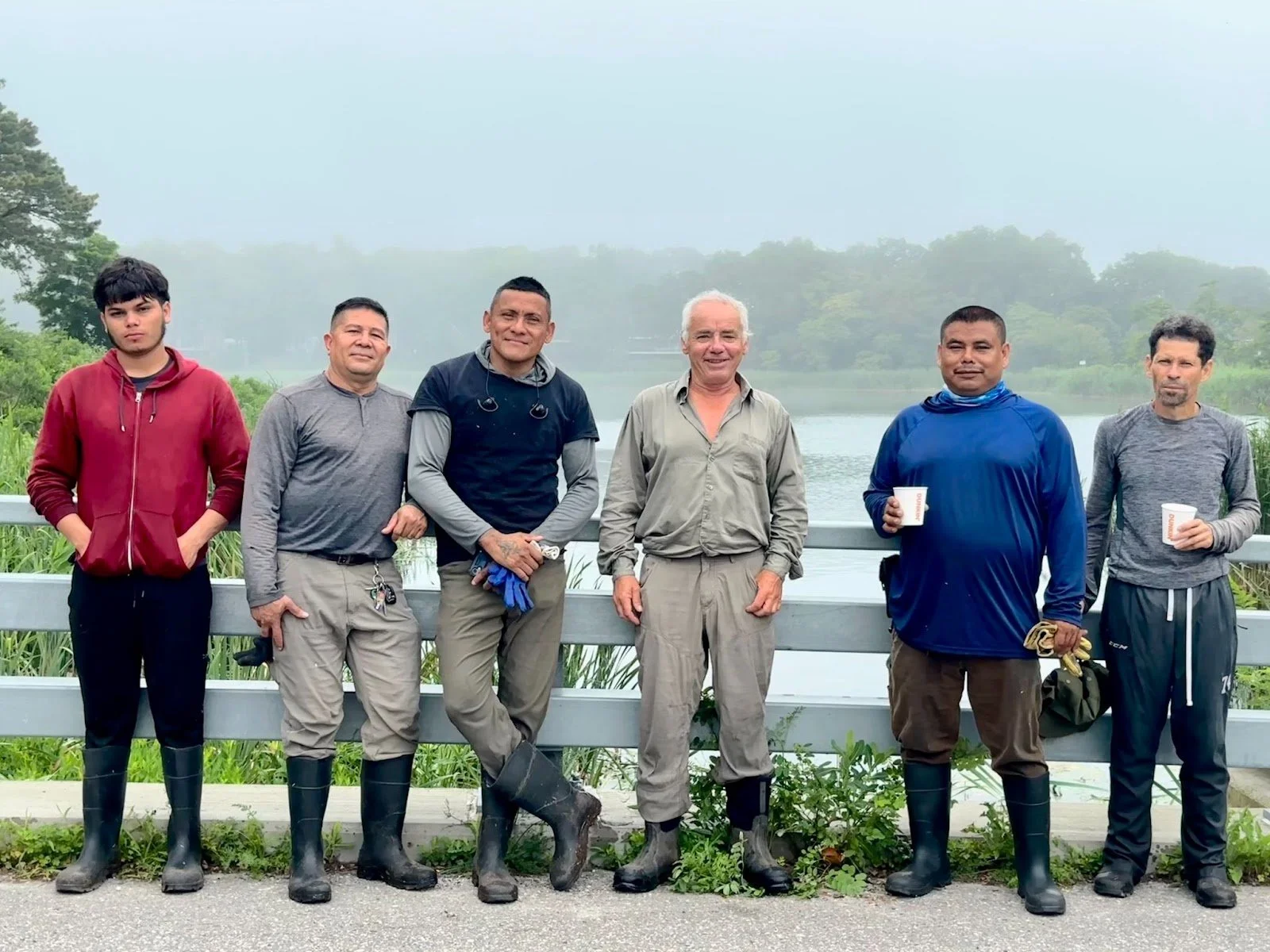State of the Lake Report: Summer 2025
Cutting deep into the phrags near the cemetery
July 12th Cut Report - Peter Meleady
A crew of six men cut for two days 8am – 4.30pm Saturday July 12th and Sunday July 13th.
Heavy growth of Phragmites this year. Could be due to several factors such as a high-water level because of the wet spring and summer and/or the high temperatures.
We cut on all areas of the larger section of the lake except the northern ‘corner’. As our time was limited, we focused on the lake edges at Rabbit Lane, Truman's Path, and the opposite side of the lake. We apologize if we missed any section that you particularly wanted done. We collected as much as we could, the dumpster is compacted and full to the brim.
Though the Phragmites growth was heavy there are still many areas where the native plants are thriving and expanding. The extent of the native plant areas is growing every year albeit slowly.
The water appears clear and full of life; I took pictures of three native submerged aquatic plants which are thriving in different areas of the water body. These plants are an indicator of the good quality of the water. In the shallow part the Rabbit Lane end of the lake supports a couple of acres of American eel grass Vallisneria americana. These beds of eelgrass provide habitat for an abundance of prey as food for other species, and acts as a nursery for many fish species. They also stabilize sediment and improve water quality. We are very lucky that we do not have any invasive submerged aquatic species and we will keep constantly monitoring the water for signs of aquatic invasives (which are very difficult to control once introduced).
I am attaching some pictures of the aquatic plants (attached below) and of some wetland species from the shoreline. Some of them spotted for the first time this year, the number of native species establishing is increasing every year
It’s a little frustrating only cutting for two days as it only covers some sections, and we are moving as fast as we can, trying to get as much done in the limited time as possible, inevitably we miss out on some areas and understand that some people may be disappointed that we did not reach their particular area. This I apologize for. We do our best in the time we have and this, though it is not complete, is still beneficial for the health of the lake and of course at this time for aesthetic reasons too.
Thanks again for the work, and the coffee, bagels, and donuts!
Peter and crew.
Oh, forgot to mention that area behind the dumpster, we couldn’t go in too far as the whole area is covered in Poison ivy, some of it up to 8’ tall. We will be able to get to the Phragmites there in the fall once the poison ivy has dropped its leaves.




